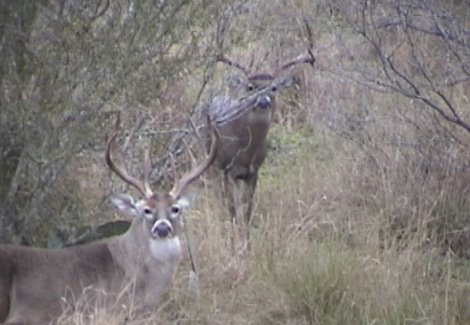
When it comes to white-tailed deer management we do know a lot, but we do not know it all. There is a lot that is not known about how white-tailed deer affect their habitat under different densities with and without supplemental feed, however, that is exactly what a research project initiated on two South Texas ranchesd hoped to determine — the effects of deer on native vegetation.
To accurately conduct the research, six 200-acre enclosures were constructed on both ranches. In addition, they were divided into 3 pairs — each with target populations of 10, 25, or 40 white-tailed deer. One of each pair was supplemented with a free-choice (all you can eat) pelleted supplemental ration and the other was left to forage from only native forbs and browse. To document changes in habitat condition, canopy cover and biomass were estimated annually.
Forbs consumed by deer declined where feed was not provided, but they increased when feed was available. The supplementally fed pens with the lowest deer density had the greatest decrease in forb use. However, even under various densities and some pens not receiving any supplemental feed, the pens did not show any significant a difference in plant utilization.
From the study, the researches concluded that free-choice supplemental feeding appears to alleviate foraging pressure, however, results should be considered preliminary because extreme annual variation in rainfall may have different outcomes. The results of the study were somewhat complicated because although the researchers could control many factors, they could not ensure that all pens were exactly the same with regard to vegetation. In addition, had the research taken place during drought years, the results could have been much different.
It makes sense that higher deer densities would have greater impacts on native plants, especially in areas where deer do not receive supplemental feed. However, this study did not come to that conclusion and it probably had something to do with outstanding natural habitat conditions during the study period. Had the study followed the individual herds for a longer period of time, or had habitat conditions been poor to very bad, then the low density deer pens would have faired best, especially those with supplemental feed.
How wide is that one in the back?
We are considering using high quality sudan grass and other high protein forages such as alfalfa for feeding deer in confinement. Sudan grass has about 8-12% crude protein on a dry matter basis. Has anyone tried sudan as a supplemental feed in combination with other feeds for whitetail deer?